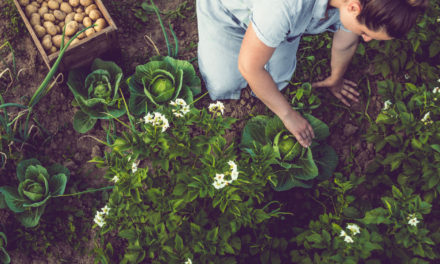It pays to be nice to honeybees. They’re putting food in your mouth, after all.
One in three bites of the food we eat depend on pollinators including bees, according to the Boulder-based National Honey Board. These little flying insects also help plants reproduce by pollinating them — carrying pollen on their bodies from plant to plant as they collect pollen and nectar.
Crops pollinated by bees include almonds, apples, blueberries, garlic, pumpkins, raspberries, watermelons, “all the colorful things we have in our diet, and a lot of the things in our produce aisle,” said Catherine Barry, marketing director at the National Honey Board.
Up to 95 percent of flowering plants need a little help with pollination, per pollinator.org. That’s where pollinators such as honeybees, butterflies, bats, beetles, birds and other tiny flower feeders come in.
It’s simple to encourage bees to visit your garden, and it’s good for the ecosystem, Barry said. Plant flowers and other plants that give bees good nutrition, avoid use of pesticides and provide bees some water. You also can raise bees, but that takes more education and effort.
“In terms of what consumers can do, provide foliage,” she said. “Plant plants and flowers that are going to give honeybees a lot of nutrition, or something that has amazing pollen that they can use, which is their protein source.”
Bees don’t visit or benefit from every type of flower, and certain flowers flourish better in specific areas, Barry said.
For instance, good flowers for gardens in the Pikes Peak region are the state flower, the Colorado blue columbine, as well as bluebells, bellflowers, the Rocky Mountain Penstemon, also known as beardtongue, and the smooth blue aster. Good plants include sagebrush and milkweed. For more suggestions, search for your own location at wildflower.org or enter your ZIP code at Pollinator.org.
“When people are planting those bee-friendly plants, one thing to be mindful of is using pesticides. These are very harmful to the bees,” she said. “If you must use pesticides in your garden, use them limitedly. Do not use them when flowers are in bloom, which is when bees would be collecting the pollen. Use good old weed-pulling.”
Bees get thirsty, too. Barry said adding a bee bath to your garden can help them.
“They also need water, which you can accomplish with a bird bath. But keep in mind that you need to add a landing pad, because bees don’t float on water. You can add rocks or marbles inside. It’s beautiful too, and you can get colorful marbles. This could be a good project for kids in the summer.”
And by buying honey, she said, you support beekeepers and keep their businesses running.
It’s as easy as picking up some honey at a grocery store, farmers market or beekeeper friend down the street.
Fun fact: The honey bee is the only insect that produces food eaten by man.
“There has been a lot of pushback from consumers not wanting to eat honey because they’re concerned the honey is being taken away from the bees. They do make honey because it’s their food source, but they make extra. And most beekeepers will always leave them more than enough to feed on,” Barry said.
To make 1 pound of honey, honeybees must visit 2 million flowers. A lot of people aren’t aware, however, that the average beehive will produce about 65 pounds of excess honey a year, she said.
Honey is a versatile ingredient that can be eaten on its own, in tea or in recipes. The most popular honey recipe now on the National Honey Board site, honey.com, is Baked Honey Bacon Benedict. Visit the site for that recipe and more examples.

 Photo Credit: proxyminder (iStock).
Photo Credit: proxyminder (iStock). 



Comment on: Why You Should Embrace Bees in the Garden